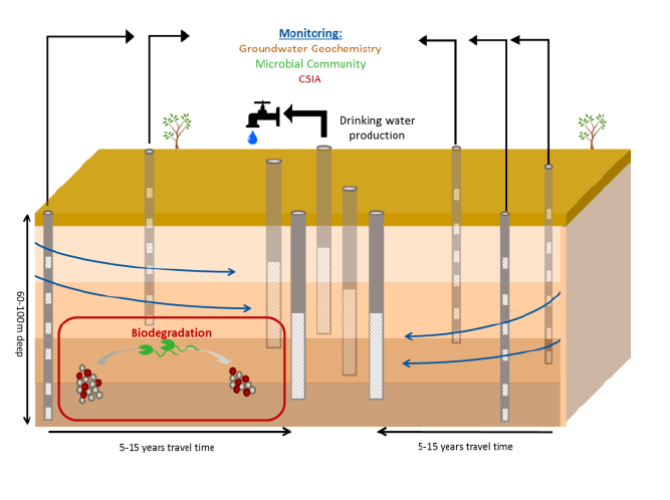
Project
Biodegradation of organic micropollutants in groundwater systems
The increasing presence of organic micropollutants in different segments of the water cycle threatens future water resources. These micropollutants are currently being detected at low concentrations in groundwater and surface water used for drinking water intake.
While current monitoring (chemical analyses) gives an indication of the presence of these micropollutants, little is known about the natural attenuation of micropollutants in water. This information is required to assess and mitigate the risks of contamination of drinking water resources. The aim of this research is to understand micropollutant fate and transformation in natural systems and develop tools to assess and stimulate microbial biodegradation activity.
Method
The project focuses on micropollutants that specifically threaten Dutch drinking water quality. Collaboration with drinking water companies provides a list of priority compounds for further research in lab experiments and a set of field locations for investigations. For both, biomolecular tools based on DNA analysis are used to assess the natural attenuation capacity. This is combined with advanced analytical tools to identify biodegradation using isotope fractionation. Results will be integrated to form guidelines for the prediction of natural attenuation using molecular tools.
Technical Challenge
This research project aims to improve the biodegradation of micropollutants by developing tools to determine biodegradation capacity of a number of key compounds. Micropollutants have very diverse chemical structures and are present at low concentrations. These factors make it is very difficult to determine degradation pathways and develop tools to assess natural attenuation. Also, there is a lack of information on biodegradation rates under environmental conditions. This information is required to improve models used to assess and predict the long term risks of contamination of drinking water intakes Finally, there are no technologies available to stimulate micropollutant biodegradation in natural systems.
